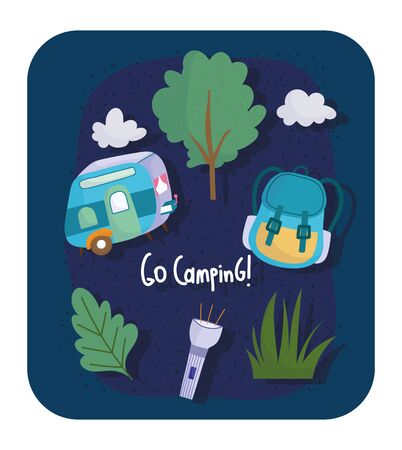Introduction: Why Travel the Lake District Sustainably?
Imagine a patchwork of emerald fells, mirror-like lakes, and honey-stone villages nestled in the heart of Cumbria—this is the Lake District, a landscape that has inspired poets, painters, and ramblers for centuries. Its ancient drystone walls trace across rolling hillsides, while sheep graze under the watchful gaze of Scafell Pike. Yet, this cherished corner of England is more than just a postcard-perfect escape; it’s a living tapestry woven from deep-rooted traditions, literary heritage, and a profound sense of place. As visitors flock to marvel at its natural wonders, the Lake District faces growing pressures: crowded car parks, eroded footpaths, and strains on local communities. Choosing to explore by train and on foot isn’t just practical—it’s a gentle act of stewardship. Travelling sustainably allows you to slip quietly into the rhythms of Lakeland life, reducing your carbon footprint while soaking up the sights, sounds, and stories that make this landscape so unique. Let’s begin our journey into sustainable camping among these timeless hills.
2. Getting There: By Train into the Heart of Cumbria
There’s something undeniably romantic about embarking on a railway journey through the British countryside, especially when your destination is the Lake District. Travelling by train not only reduces your carbon footprint but also invites you to slow down and savour the unfolding landscapes, from patchwork fields to misty hills that hint at adventures to come. For many, the journey itself becomes an essential part of the Lake District experience—windows framing sheep-dotted meadows, craggy fells, and charming stone villages as you glide northwards.
Popular Train Routes to the Lake District
| Departure City | Main Route | Key Stations for Walkers | Approximate Journey Time |
|---|---|---|---|
| London Euston | West Coast Main Line via Avanti West Coast | Oxenholme Lake District, Windermere, Penrith North Lakes | 2.5–3.5 hours |
| Manchester Piccadilly | Northern Rail/TransPennine Express | Windermere, Oxenholme, Grange-over-Sands | 1.5–2 hours |
| Glasgow Central | Avanti West Coast or TransPennine Express southbound | Penrith North Lakes, Oxenholme, Kendal | 1.5–2 hours |
| Birmingham New Street | Avanti West Coast northbound | Oxenholme, Penrith North Lakes, Windermere (via change) | 2–3 hours |
Local Stations Ideal for Walkers and Campers
The Lake District’s compact rail network offers several stations perfectly placed for those keen to step straight off the platform onto scenic footpaths. Windermere station, just a short walk from town and lakeshore, is a favourite starting point for wild camping trips and classic fell walks. Oxenholme Lake District station, perched on the mainline, connects easily to Kendal and onward buses into the National Park. Meanwhile, Penrith North Lakes station places you within easy reach of Ullswater’s tranquil shores and less-trodden routes.
Booking Tickets: Insider Advice for a Smooth Journey
To secure the best fares—especially during peak summer months—it’s wise to book tickets in advance using trusted UK rail sites like National Rail Enquiries, Trainline, or directly with operators such as Avanti West Coast. Look out for “Advance” tickets and off-peak deals that offer significant savings. If you’re planning to travel spontaneously or hike between stations, consider investing in a BritRail Pass or regional rover ticket for added flexibility.
The Charm of Slower Travel: Mindful Moments by Rail
Catching a train into Cumbria is more than just a means to an end—it’s an invitation to embrace a gentler pace. As your carriage rolls past hedgerows and hillsides in shifting light, there’s time to daydream, journal, or simply gaze at the landscape in quiet wonder. These mindful moments set the tone for your trip: unhurried, present, and attuned to nature—qualities that carry beautifully into your days spent camping under Cumbrian skies.

3. On Foot: Classic Walks and Hidden Paths
The Lake District reveals its true magic when explored on foot, where every step brings you closer to its poetic landscapes and timeless tranquillity. Whether you’re drawn to the iconic fells or enchanted by quiet waterside paths, there is a walk here for every spirit.
Classic Fell Walks
For those seeking the classic Cumbrian experience, the ascent of Helvellyn via Striding Edge is a rite of passage—rewarding walkers with dramatic ridgeline views and exhilarating moments above the clouds. Alternatively, Catbells offers a gentler climb, beloved for its panoramic vistas over Derwentwater and accessible from Keswick by bus or footpath.
Lakeside Strolls
If your heart yearns for more leisurely rambles, the circular trail around Buttermere is a dream: ancient woodlands, mirrored waters, and glimpses of grazing Herdwick sheep define this peaceful loop. For something truly serene, wander along the quieter shores of Rydal Water, pausing at Wordsworth’s old haunts to reflect on the landscape’s literary heritage.
Lesser-Known Trails
Venture off the beaten track and you’ll find hidden gems such as the secluded valley of Dovedale, where mossy woodland paths lead to secret waterfalls. Or seek out the gentle beauty of Ennerdale, one of the wildest and least visited corners, perfect for those who crave solitude and connection with nature’s rhythms.
Navigating with Ordnance Survey Maps
A trusty Ordnance Survey map (OL4, OL5, or OL7 depending on your area) is indispensable for safe and rewarding exploration. Familiarise yourself with local waymarks, contour lines, and rights of way before setting out—many villages have information boards, but carrying a paper map ensures you can always find your bearings.
Walking Etiquette & Respecting the Landscape
The Lake District’s beauty endures only through care. Keep to marked paths to prevent erosion; close gates behind you; greet fellow walkers with a friendly nod or “morning!”—a small but cherished tradition here. Take litter home and resist picking wildflowers; instead, let your presence leave no trace. Remember that sheep roam freely—give them space and keep dogs under control at all times.
This mindful approach ensures that both treasured trails and hidden corners remain unspoilt for future wanderers. With every stride across these storied hills and beside these gentle lakes, you become part of a living tapestry woven from respect, wonder, and quiet adventure.
4. Green Camping: Sites and Wild Pitches
The Lake District’s soul is deeply entwined with its natural splendour, and camping here offers an intimate experience with the wild beauty of Cumbria. For those seeking to tread lightly, choosing eco-friendly campsites or responsible wild pitches is both a privilege and a responsibility.
Eco-Friendly Campsites in the Lake District
If you prefer the comforts of established sites yet wish to remain green, several campsites across the Lakes are committed to sustainable practices. They use renewable energy, have recycling schemes, promote local produce, and encourage low-impact stays.
| Campsite | Location | Sustainability Highlights |
|---|---|---|
| Low Wray Campsite (National Trust) | Windermere | Solar showers, recycling points, wildflower meadows |
| Baysbrown Farm Campsite | Great Langdale | Minimal grass cutting for wildlife, on-site farm shop with local goods |
| Castlerigg Hall Caravan & Camping Park | Keswick | Electric vehicle charging, LED lighting, tree planting schemes |
The Nuances of Wild Camping in the Lakes
Wild camping is not strictly legal in England and Wales without landowner permission. However, it’s long been a tradition in the Lake District fells when done discreetly and respectfully. The ethos here is simple: arrive late, leave early, camp high above enclosed farmland, and never light open fires.
Leave No Trace: Practising Minimal Impact Camping
- Pitch Responsibly: Select durable surfaces like short grass or dry ground; avoid sensitive habitats such as peat bogs and wetlands.
- Packing Out: Everything you bring in—rubbish, leftover food, even biodegradable waste—should leave with you.
- Respect Waterways: Camp at least 50 metres from lakes and streams to prevent pollution and disturbance to wildlife.
- No Fires: Use a portable stove for cooking; open fires scar the landscape and pose wildfire risks.
- Tread Lightly: Group size should be kept small (ideally one or two tents), and duration no longer than one night per spot.
A Thoughtful Footprint: The Heart of Sustainable Adventure
Sustainable camping in the Lake District is about blending into the rhythm of nature rather than imposing upon it. Whether at an eco-conscious campsite or tucked away on a lonely fellside under starlit skies, let your presence be gentle—a passing shadow that leaves no mark but cherished memories.
5. Lake District Essentials: Packing and Provisions
Venturing into the Lake District by train and on foot calls for packing with both practicality and pleasure in mind, attuned to the ever-shifting British weather and the joys of local flavours. Here’s how to prepare your rucksack for a journey that is gentle on the land and rich in local experience.
Weather-Ready Wardrobe
The Lake District is famed for its four seasons in a day, so layers are your friend. Pack a lightweight, waterproof jacket and trousers—there’s nothing quite like the soft patter of Cumbrian rain on your hood as you wander misty fells. A woollen jumper or fleece offers warmth when the wind picks up across open ridges, while breathable base layers help manage energetic hill climbs. Don’t forget sturdy walking boots, thick socks, and a hat that can shield you from both sun and drizzle. A reusable water bottle and quick-dry towel round off your essentials for comfort and sustainability.
Taste of Cumbria: Local Provisions
Embrace the region’s bounty by seeking out local produce to fill your picnic hamper. Stock up on crumbly Kendal Mint Cake—a sweet treat beloved by walkers—or tuck away wedges of tangy local cheese and oatcakes from a nearby deli. Freshly-baked sourdough, home-cured meats, and hand-pressed apple juice from village shops not only nourish but connect you to the landscape’s agricultural rhythms. For something heartier, pick up pies or pasties crafted with love by Cumbrian bakers; perfect fuel for long rambles beside wind-rippled lakes.
Supporting Village Shops & Farmers’ Markets
Part of travelling lightly means treading softly through communities as well as nature. Whenever possible, choose to shop at independent village stores or farmers’ markets. This supports local growers and artisans while reducing food miles—a win for both economy and environment. Many market stalls offer seasonal fruit, homemade jams, free-range eggs, or just-picked veg: ideal for campsite suppers under starlit skies.
Final Thoughts on Sustainable Packing
Packing thoughtfully ensures not only your comfort but also a positive impact on this cherished National Park. Bring reusable containers for food, biodegradable soap for washing up, and a small rubbish bag to carry out what you bring in—leaving no trace beyond footprints in dew-speckled grass. With each careful choice, you become part of the Lake District’s timeless story: one of respect, beauty, and belonging.
6. Experiencing Local Culture and Community
Wandering the Lake District on foot and by train offers a rare chance to slip into the region’s gentle rhythm, where local life flourishes in harmony with wild landscapes. To truly immerse yourself, venture beyond the well-trodden trails and discover the welcoming embrace of village pubs, centuries-old churches, and family-run tearooms nestled in stone-built cottages. Each encounter invites you to share in Cumbria’s unique heritage—be it through a pint of locally brewed ale by a crackling fire or a slice of homemade gingerbread at a bustling farmers’ market.
Connecting Over Tradition
Let curiosity be your compass as you explore the villages that dot the fells. Strike up conversations with publicans who are eager to recount tales of their communities, or join locals for a Sunday roast where laughter flows as easily as the gravy. Many pubs host evenings of traditional music; linger awhile, and you might hear ancient ballads echoing across wooden beams, telling stories as old as the hills themselves.
Tearooms and Artisan Crafts
Pause your journey at a family-run tearoom, where delicate china cups clink softly against saucers and freshly baked scones tempt from behind glass counters. These small sanctuaries are more than places to rest—they are living archives of local recipes and hospitality. Equally rewarding is visiting craft workshops: watch skilled hands shape Herdwick wool into keepsakes or learn about age-old slate carving techniques from artisans whose families have worked these materials for generations.
Respectful Engagement
To honour this landscape and its people, approach each interaction with openness and respect. Support independent businesses by choosing locally made goods over mass-produced souvenirs. Attend village fetes or agricultural shows if your visit coincides—these gatherings pulse with community spirit and offer insight into rural traditions. Above all, listen deeply: every smile, every shared story is an invitation to become part of the Lake District’s enduring tapestry—a privilege for those who travel thoughtfully.
7. Reflecting on the Journey: From Fells to Friendships
As your boots carry you homeward and the gentle rumble of the train marks the rhythm of your return, it’s worth pausing to reflect on what these days in the Lake District have gifted you. The act of travelling here by train and venturing forth on foot isn’t just a nod to sustainability—it’s an invitation to slow down and notice life’s subtler notes.
Finding Meaning in Simple Rituals
There is beauty in the morning ritual of boiling water for tea as mist unfurls across a quiet tarn, or in the careful unrolling of your sleeping bag beneath a canopy of ancient oaks. These moments—mundane yet profound—invite us to reconnect with ourselves, with nature, and with the rhythms that once shaped every human day.
The Power of Stillness
Wandering among fells softened by centuries of weather, you learn that stillness is not emptiness but fullness: the hush after rain, the low call of curlews at dusk, the way golden light pools over dry-stone walls. It’s here, in these pauses between footsteps or along a sunlit path, that we discover clarity and contentment far removed from daily haste.
Treading Lightly and Making Connections
The joy of treading lightly—leaving nothing behind but footprints and taking away only memories—creates a sense of belonging to something greater than ourselves. Along winding trails and shared campsites, friendships form as easily as laughter around a flickering stove. Stories are exchanged, advice is offered, and strangers become fellow travellers bound by respect for this storied land.
So as your journey ends, remember: true adventure lies not only in summiting peaks but in cherishing small wonders, honouring quiet moments, and forging connections—with people and place—that linger long after you’ve left the Lakeland hills behind.


